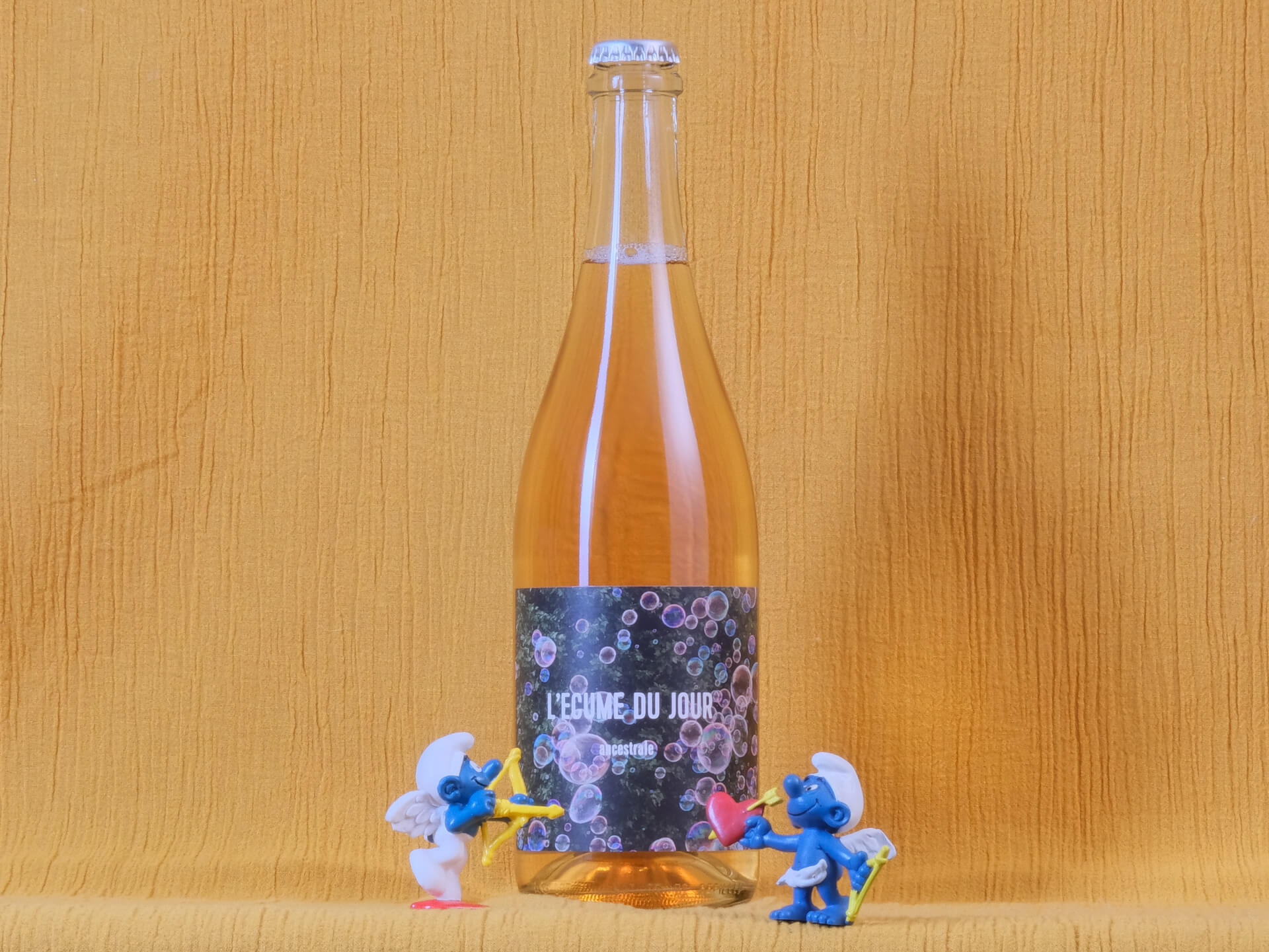From Gilles Lapalus, this is a red-fruited rosé pét-nat, bright and crunchy with a chalky, dry and ultra-refreshing palate. Made from Heathcote syrah and nebbiolo, the juice was fermented on fiano, greco and arinto skins for 10 days before being bottled while still fermenting to create the fizz in bottle.
Tasting note
Rusty, onion peel in colour. Bright lift of red fruits, orange oil, sour red berries and a whiff of oyster brine giving it a subtle savoury salinity against struck granite accents. There’s a chalky, pumice-like mineral feel through the palate, with the cool ripeness of the fruit giving just the right amount of flex to the minerality and leesy and gently skinsy chew. It’s arrestingly fresh, moreish and delicious, both thirst making and thirst slaking.
Themes of this wine
Pét-nat
Pétillant naturel (pét-nat) or méthode ancestrale is an ancient approach to making sparkling wine, with the primary ferment finishing in bottle to create the bubbles, with the result usually simpler and brighter than a wine made with the Champagne method. These styles all but disappeared, but were revived in France in the 1990s – when the term pétillant naturel was coined – as a cornerstone of the developing natural wine movement, which they are still strongly associated with.
Checkout our Deep Dive into Australian pét-nat, here.
Skin contact
The skins hold the colouring matter and lots of tannin. Leave them in contact with the juice/wine and you’ll extract those elements. Most conventional white wine sees no skin contact, rosé a little bit to get a blush, and red wine plenty to get the colour and structure. Skin-contact whites… well, they have some skin contact. Yep. More colour, more tannin and a different flavour profile.
Checkout our Deep Dive into Australian skin contact whites, here.
Heathcote
Heathcote is rugged country, a tinder-dry landscape of rusty iron-rich soils littered with sculpturally stacked granitic boulders. It’s mythical territory, ancient land, and home to some of the world’s oldest viticultural soils. But as a wine region, it is a relatively young one, which saw an explosion of growth in the 90s. Shiraz led the charge, and it became Victoria’s answer to the Barossa or McLaren Vale, producing wines of significant power. But Heathcote is very different to both those places, and it is not that easily defined. Today, shiraz finds myriad expressions, and other many other varieties are taking a firm grip, especially those suited to dry and warm climes.
Syrah/shiraz
Shiraz dominates the Australian wine industry, accounting for nearly a third of this country’s vines. The grape’s traditional home is in France’s Northern Rhône, with wines that combine elegance and power, while Australia is perhaps best known for the muscular styles from warmer areas. Today, drinkers of Australian shiraz are spoilt for choice with expressions ranging from the elegant and spicy to the monumental.
Nebbiolo
Nebbiolo is the great grape of Piedmont, responsible for both Barolo and Barbaresco, but it has also found an important place in Australia, especially in cooler elevated vineyard sites. It’s a grape of high tannin, high acid and often high alcohol, but it’s also typically fragrant and savoury, with dried floral notes, red and dark berries and plenty of spices ¬– the classic flavour profile being “tar and roses”.



